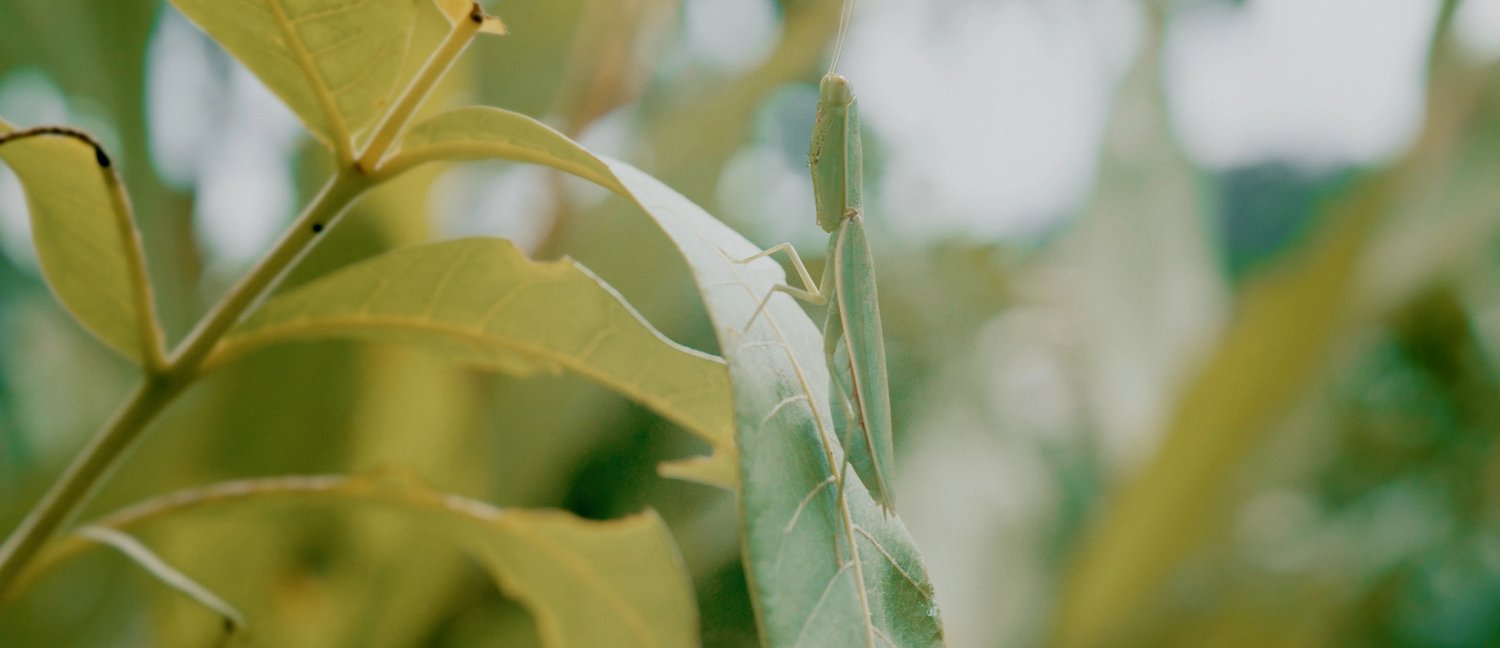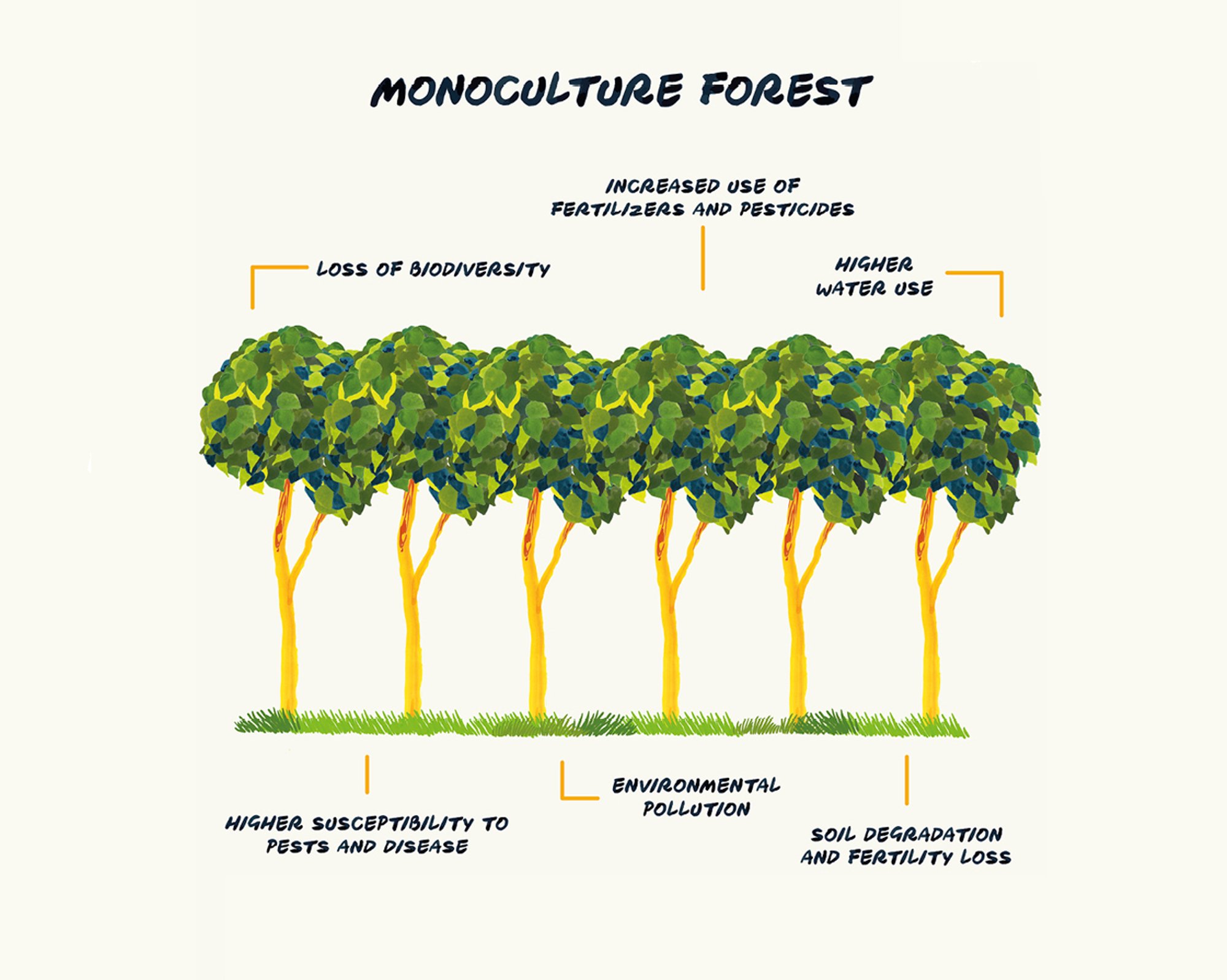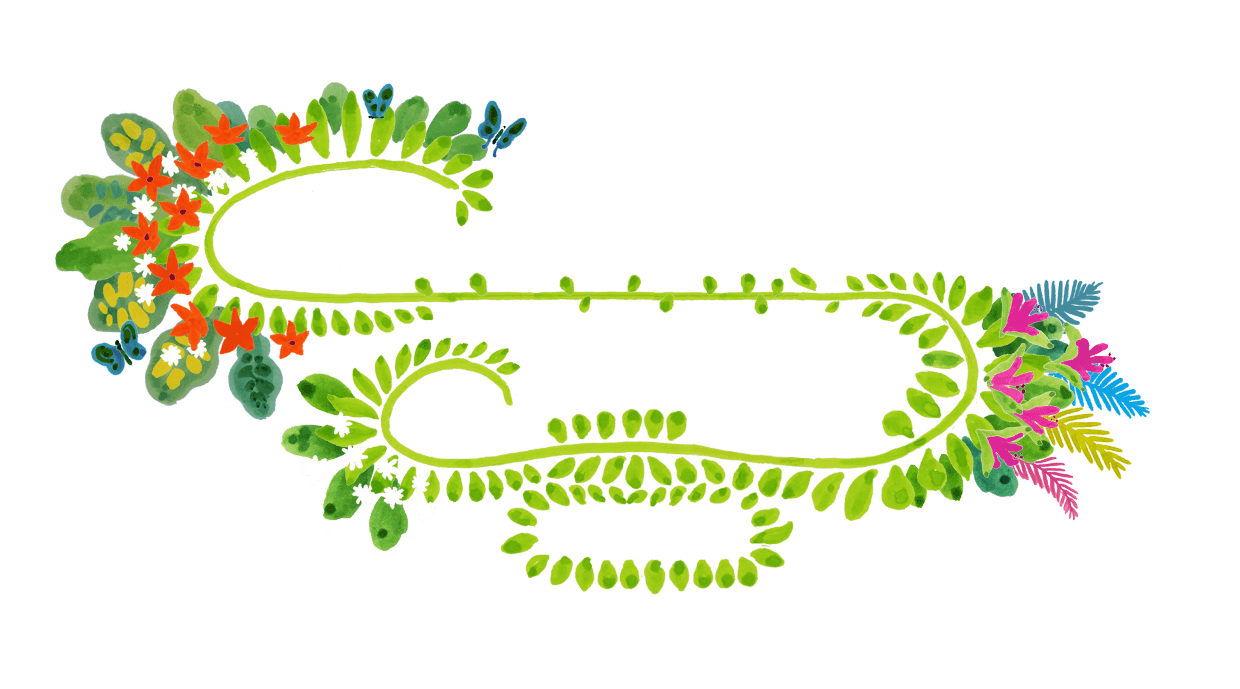
Insight
Why we need forest diversity?
Words by: James Godfrey-Faussett
— Lead Forest Maker at SUGi
Trees grow best as part of a diverse community - not too few or too many of any one species- or in other words as part of a forest ecosystem where the individuals thrive, benefitting from being part of the overall interacting ecosystem.
Large or small, the forest community allows this interaction trees need to flourish, adapt and grow healthily, functioning as one large ecosystem made up of an infinite amount of living cogs.
It’s scientifically proven that loneliness can make us mentally and physically ill and shorten life spans and it’s the same in nature and prevalent in the world of trees. Perversely urban loneliness can exacerbate this both for humans and nature.
Mono-planted urban trees lack the benefits of the community and will tend to suffer. The relationships and symbiotic natures of their daily lives aren’t there, leading to slower growth, a higher susceptibility to disease, less pollination and a lowering of the tree’s immune system. The accompanying biodiversity suffers too as a stand alone urban tree offers less protection and diversity for varied organisms to call a permanent home.


From a practical point of view, this leads to greater maintenance requirements - more watering as root formation and mycorrhizal associations are lessened and the tree isn’t able to seek assistance from the community network. Disease is normally more prevalent as again the diversity and balance of a forest ecosystem isn’t there to help offer solutions - either preventative or in potential corrective healing ways. The urban mono tree also has it’s important leaf litter tied away, when it should be left to constantly replenish and balance the soil fertility.
By rewilding urban areas with native and diverse pockets of forest we create the community aspect that trees need to flourish and become self-sustaining. This allows biodiversity to rapidly establish.




